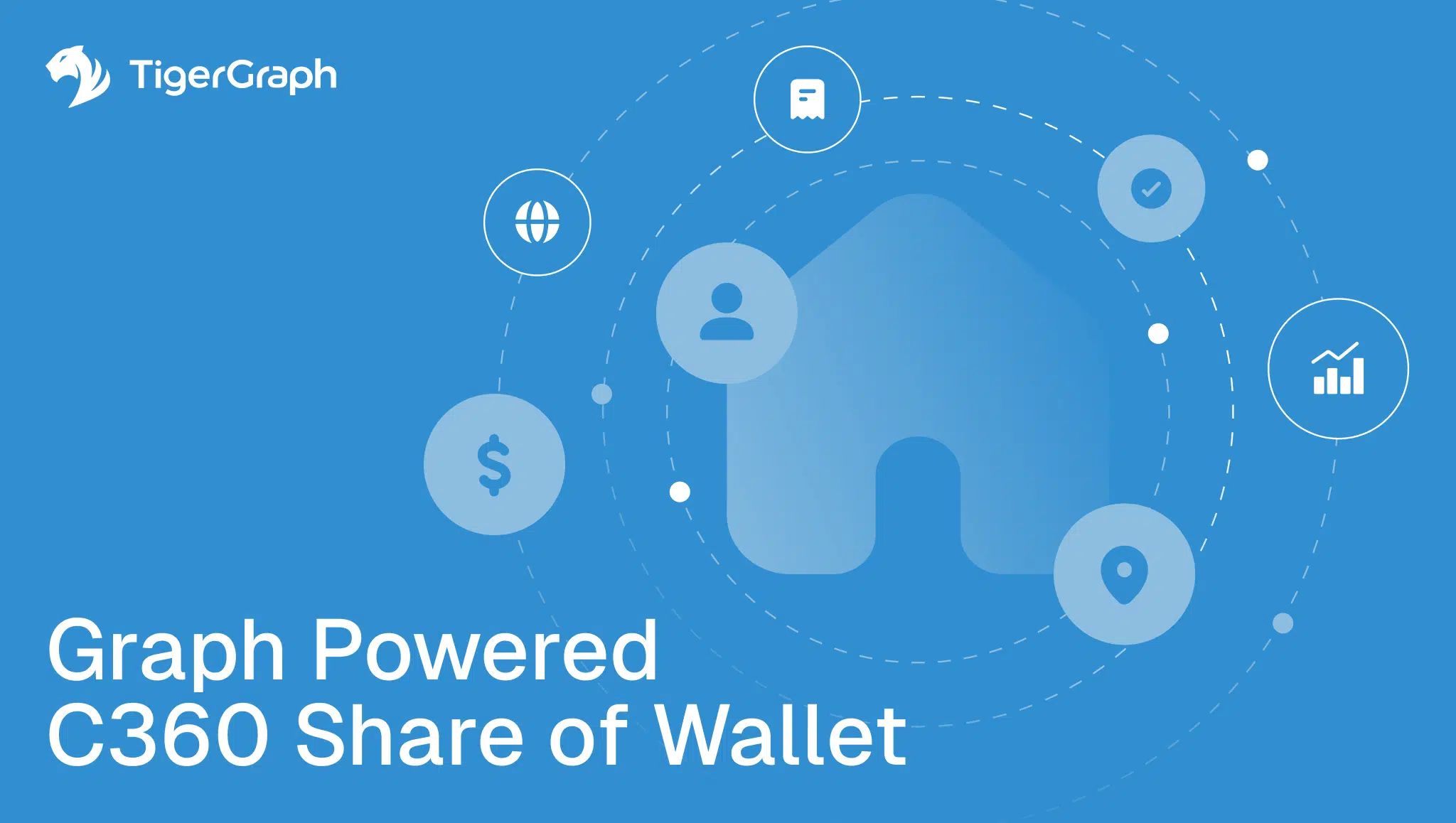How Graph Powers Customer 360 Growth in Tech
You closed the account, and that’s great—but what happens next? In SaaS, platform, and enterprise tech companies, signing the contract is just the beginning. Long-term success is measured by how thoroughly your product becomes embedded into the customer’s daily operations.
Are users adopting it across teams? Is engagement growing in new departments? Are power users advocating internally, or quietly disengaging? If you can’t answer these questions as they happen, you’re not effectively managing the relationship, and you end up reacting to symptoms.
Flat dashboards and CRM fields will only take you so far. To understand what’s actually happening inside a customer account, you need a behavioral view of engagement, and graph is purpose-built for this.
Graph technology allows you to model and analyze the living network of users, behaviors, and influence inside a single enterprise account. And with TigerGraph, that intelligence becomes accessible at scale, fast enough to inform decisions, detailed enough to guide strategy.
Customer 360 in Tech Needs a Behavioral View
Customer 360 in a tech environment requires understanding how and where your product delivers value, and how that value changes over time.
Traditional CRMs do a good job of capturing buyer personas: the person who signed the agreement, the procurement lead, and the budget holder. But they often fail to capture user personas, and this is crucial insight. These are the everyday practitioners who log in, collaborate, submit feedback, and influence whether the product becomes indispensable or gets replaced.
You’re flying blind if you’re not seeing:
- How usage is distributed across departments or locations,
- Whether adoption is spreading or stagnating,
- Who your internal champions are, and who they’re influencing,
Graph reveals these behavioral, relational, and temporal patterns. It models usage as a network: who is doing what, when, and with whom, and how those interactions evolve. This shift in perspective is critical if you want to grow not just accounts, but engagement.
TigerGraph supports this behavioral view through schema-first graph modeling, native multi-hop traversal and analytics, and real-time integration across systems. That means you don’t just see the account. You see the organism and how it’s moving.
What Traditional Tools Miss (and Why That’s a Problem)
Most customer success platforms aren’t broken, but they are incomplete.
CRMs tell you who the executive sponsor is. Product analytics show you which features are being used. Support systems show you where things are breaking. Renewal tools track contract terms and usage thresholds. But none of them tell you the why behind engagement changes — or the who behind growth and decay.
They don’t show you:
- That one team is thriving with your product, while another has dropped off.
- That a key champion left the company, and their influence went with them.
- That the same two users are the only ones bridging adoption across teams, and if they disengage, the whole account’s value erodes.
These signals are spread across tools and invisible without connectional context.
Graph technology, and TigerGraph specifically, brings these elements together in a unified model. It doesn’t just store data. It reveals the story behind customer behavior:
- Where engagement is concentrated
- How it spreads
- Who holds the threads of retention, expansion, or risk
And because TigerGraph is designed for real-time graph analytics at scale, it does this continuously, not as a retrospective report, but as a live map of customer health.
What Graph Intelligence Unlocks Inside the Account
Once you reframe your customer not as a flat list of contacts, but as a living network of people, actions, and relationships, everything changes. Graph intelligence makes that reframing possible and powerful.
With graph, you can explore the real structure of product engagement, uncovering insights like:
- Which teams are using your product most, and who isn’t? You might see adoption concentrated in a few departments, while others remain untapped. That’s an opportunity for expansion, or a warning signal if those teams are siloed from the value you deliver.
- Who are your internal champions, and how are they influencing others? Graph reveals which users are cross-pollinating adoption, advocating for new features, or driving collaboration. These aren’t always the ones with senior titles, but they’re often the ones who determine stickiness.
- Where is engagement decaying (before it turns into churn)? If formerly active users stop interacting, or if support tickets cluster around a specific team, graph surfaces those anomalies in real time. You’re alerted before renewal is at risk, not after.
- How does product usage map to outcomes? Do your most successful accounts share adoption patterns? Graph reveals shared behaviors across thriving customer networks, helping you refine onboarding, tailor outreach, and replicate success.
In short, graph gives you more than a dashboard. It gives you a diagnostic and predictive lens into what’s working, what’s changing, and what needs attention.
Moving From Connected Data to Connected Strategy
While graph is the foundation, TigerGraph brings it to life at enterprise scale. TigerGraph supports:
- Cross-system entity resolution: Merge CRM contacts, login credentials, support IDs, and usage records into a unified identity graph. No more fractured views—just one, connected picture of each customer.
- Schema-first modeling for complex, meaningful customer hierarchies: Model teams, roles, geographies, and usage behaviors with precision, while maintaining the flexibility to evolve as your data grows.
- Real-time analytics via parallel traversal: Ask multi-hop questions like “Who influences usage across departments, and are they still engaged?” and get sub-second answers, even across billions of data points.
- Integration with ML and AI workflows: Feed graph-structured insights into churn prediction models, usage scoring, or in-product nudges. TigerGraph supports GNNs, graph features, and custom ML pipelines.
These capabilities let tech companies shift from reactive to proactive and from insight to action.
In Action: Spotting Silent Risk in a “Healthy” Account
On paper, everything looks fine. An enterprise customer is logging in regularly, submitting support tickets at a normal rate, and hasn’t raised any major concerns. But something is off, and traditional dashboards don’t catch it.
A Customer 360 graph, however, reveals telltale behavior:
- Declining collaboration between teams that previously shared usage patterns
- A power user who once drove adoption has gone quiet
- Engagement is narrowing to a limited feature set compared to onboarding
To a CRM, this account looks active. But in the graph, it’s at risk.
By surfacing these signals early, customer success teams can act with precision, re-engaging dormant users, launching tailored support, and restoring momentum before renewal risk escalates. The relationship stays on track because the team saw what flat tools missed.
Don’t Just Manage Accounts, Strengthen Relationships
In tech, growth comes from how your product is being used, shared, and valued across the organization. That insight doesn’t live in a contact record. It lives in the connections between users, behaviors, support signals, and adoption patterns.
Graph reveals those connections, and TigerGraph helps you act on them.
If you’re ready to move beyond isolated metrics and start seeing the full customer journey in context, motion, and in real time, we’ll help you get there.
Stop Guessing What Your Customers Need. Start Seeing the Full Picture.
Your CRM shows your contacts. Graph shows you context—who’s using your product, how they’re connected, and where engagement is gaining or fading.
Try TigerGraph Cloud free at https://tgcloud.io and explore how real-time relationship intelligence can power smarter retention, expansion, and growth.

